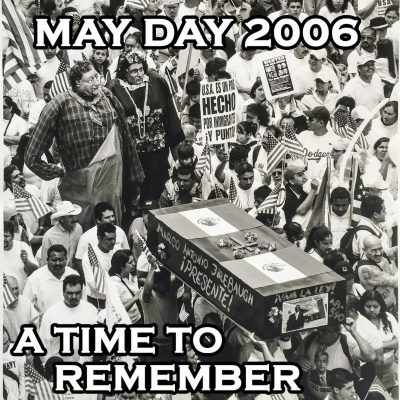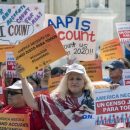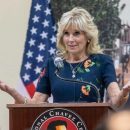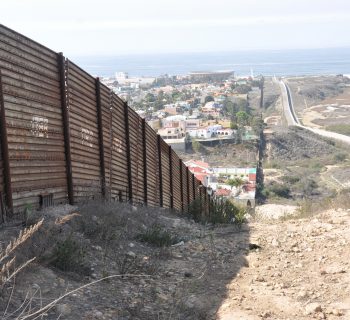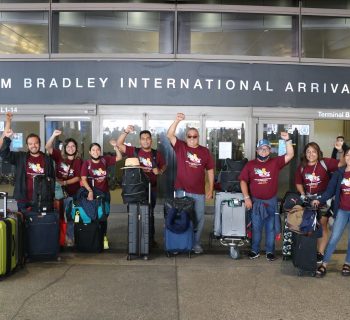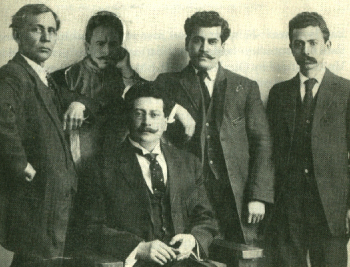After celebrating on Monday March 21, 2022, the legacy and passing of Marco Antonio Firebaugh (“The Dreamers’ Godfather”), the CMSC’s Alumni Network will now focus upon this year’s May Day celebration to continue promoting our Presidential Pardon Campaign.
The event featured a presentation about our “Presidential Pardon Campaign” by Professor Gonzalo Santos and a thoughtful reflection by Summer 2022 Dreamers Study Abroad Program participant Salvador Salazar, on Assemblyman Firebaugh's AB-540 landmark legislation in 2001, which allowed undocumented students in California to qualify for in-state tuition, and thereafter, many other states implemented similar laws.
Precisely sixteen years ago today, on March 24, 2006, Los Angeles witnessed one of the largest protest marches in U.S. history as we protested against the racist Sensenbrenner bill that would have criminalized as felons anyone that crossed undocumented into the U.S., or anyone that provided any assistance to an undocumented immigrant.
This historic protest march led to the massive national May Day protest marches held at over 150 U.S. cities on May 1st 2006, as depicted in the following photo in Los Angeles, CA where over 1.5 million people participated in 2 marches at downtown LA in the morning, and at west LA in the afternoon.
|
|
|
Professors Armando Vazquez-Ramos and Gonzalo Santos carried a symbolic casket to represent (“The Dreamers’ Godfather”) and memorialize the passing of Marco Antonio Firebaugh at the March 24, 2006, protest march against the racist Sensenbrenner bill.
|
|
|
By Brian Melley | LA Times | MAR. 22, 2022 | Photo credit: Eric Risberg for AP
|
|
The daughter of Mexican immigrants, San Diego appeals court judge was confirmed Tuesday as the first Latina to serve on the California Supreme Court.
SAN FRANCISCO, Calif. - Justice Patricia Guerrero was approved by a 3-0 vote of the Commission on Judicial Appointments to fill the vacancy left by Associate Justice Mariano-Florentino Cuéllar, who stepped down last year.
Guerrero, 50, grew up in the agricultural Imperial Valley and has worked as prosecutor, law firm partner, Superior Court judge and is on the state’s 4th District Court of Appeal. She will take her seat on the court after being sworn in later by Gov. Gavin Newsom, who nominated her.
Guerrero, who was praised by colleagues and members of the panel that included Atty. Gen. Rob Bonta and Supreme Court Chief Justice Tani Cantil-Sakauye, said she was humbled by the historic significance of her elevation to the court.
She said she stood on the shoulders of her grandparents and parents who immigrated from Mexico to give their children a better life... READ MORE
|
|
|
By G. Cristina Mora & Julie A. Dowling | LA Times | MAR. 11, 2022 | Photo by J. Scott Applewhite
|
|
On Thursday, the U.S. Census Bureau released a long-awaited report estimating the 2020 census undercount. Given the challenges of conducting a census in a pandemic, undercounts had been expected by many experts and the report bore them out: The overall total population was deemed accurate, but white people and Asian Americans were overcounted, and other groups were undercounted, especially Latinos. In fact, the undercount rate of Latinos — at 5% — represents a staggering 300% increase compared with the 2010 census.
This is not a new problem. Latinos have been a “hard to count” population for decades. Analysts at the Census Bureau know their counts may miss those who have lower incomes, experience housing instability, speak languages other than English and distrust or fear the government — all qualities present in Latino communities, which include high percentages of immigrants and whose members face discrimination that can lead to economic disadvantage.
But while an undercount may have been expected, a 300% increase is not business as usual. Rather, it is an injustice and the culmination of a calculated attack on the census during Donald Trump’s presidency... READ MORE
|
|
|
EXCLUSIVE FOR EL MAGONISTA by Prof. Gonzalo Santos | MAR. 13, 2022 | Photo by G. Santos
|
|
AUTHOR'S NOTE: This is Part III of a series on the many manifestations of chaos in the modern world-system. Part I analyzed the chaos in the world as a whole, (in Spanish only). Part II focuses on the increased chaos in Europe resulting from the Russian invasion of Ukraine (for the English version, go here).
How the migration regime in North America became the entangled Gordian Knot it is today.
I. INCOMING REFUGEE FLOWS. Of the manifold manifestations of chaos engulfing North America (which includes the Caribbean and Central America), no social aspect is more salient and pressing today than the issue of highly restricted, yet persistent flows of irregular international migration in and through the region – the ill-regulated, stigmatized flows of unauthorized economic migrants and asylum-seekers to the United States from neighboring countries – that have in large measure resulted, over the past four decades, from the implementation of what should be recognized by now as a deeply-flawed, U.S.-imposed, “neoliberal” architecture of regional integration, foisted onto a region that historically has been subjected to U.S. geopolitical interventions, which have left behind a trail of failed states, rampant corruption, and chronic street violence – on top of now being subject to periodic natural disasters associated with climate change.
The chaos runs very deep – structurally, ideologically, and even at the cognitive level.
At the ideological level of rampant U.S. and Mexican incongruence with their respective, much-vaunted “American values” and “Mexican solidarity,” and their purported adherence to a “rules-based international order” (which the U.S. regularly admonishes China and Russia of violating), it is instructive to compare the instant, welcoming, humane, and generous treatment that the most recent regional asylum-seekers in Europe – the 2.5 million Ukrainians that have fled the military invasion of Russia to date – are receiving, with the hostile, shocking and horrifying treatment that equally desperate, but much smaller cohorts of regional asylum seekers to the United States and Mexico – Central Americans, Haitians, Cubans, Venezuelans, and others – have been receiving since 2014, as tens of thousands of unaccompanied children and refugee families turned themselves in to U.S. and Mexican border patrol agents, after incredibly harrowing journeys – only to be detained, blocked from applying for asylum, and deported back to harm’s way, in flagrant violation of international law.
It has not always been the case that the E.U. has lived up to its humanitarian values (e.g., the appalling treatment of refugees from Syria, Libya, Yemen, etc.). But juxtaposing the welcoming of well-clothed Ukrainian children arriving with their caring mothers on board passenger trains and buses, with the caging of Honduran unaccompanied children after travelling on top of cargo trains or walking over two thousand kilometers to reach Brownsville, Texas, or watching Guatemalan and Salvadoran children been torn from their mothers, should jar the conscience of every American.
As Representative Alexandra Ocasio-Cortez just said, “How the world treats Ukraine, and Ukrainian refugees, should be how we are treating all refugees in the United States.” I would add Mexico to the United States, which has notoriously abandoned all pretense of defending the international rights of asylum seekers under pressure from the U.S..
Something is definitely jarring and chaotic – not to mention shameful and highly hypocritical – when the United States and Mexican governments instantly champion the cause of harboring European asylum seekers fleeing extreme violence, while they collude to block and return to harm’s way the refugee flows from their own region. This includes turning a blind eye to the U.S. routine deportation of tens of thousands of Mexico’s own asylum seekers – including unaccompanied children – fleeing from its violence-infested... READ MORE
|
|
|
Story and photo by Pierce Singgih | Long Beach Press-Telegram | MAR. 18, 2022
|
|
Long Beach City College Superintendent-President Mike Muñoz spoke at a Latino Economic Roundtable discussion at LBCC last Friday.
Long Beach politicians, academics and leaders of local organizations sought to understand how they can best address the post-pandemic economic struggles of the city’s Latino community at a roundtable discussion Friday morning, March 18.
They met at Long Beach City College for the discussion, a precede to this year’s Latino Economic Summit, where researchers will release a new Latino Economic Impact Profile Report around October, said Seiji Steimetz, a professor and chair of economics at Cal State Long Beach.
“The economic health of the city relies on the economic health of the Latino community,” Steimetz said in an interview... READ MORE
|
|
|
By Alejandra Reyes-Velarde | LA Times | MAR. 19, 2022 | Photo credit: Gary Coronado
|
|
Latinos are nearly half the population and a third of the electorate in the City of L.A.
When Antonio Villaraigosa ran for mayor of Los Angeles in the early 2000s, some were not ready for a Latino to lead the city.
Despite facing racism on the campaign trail, the third-generation Mexican American leaned into his identity, learning Spanish and holding bilingual news conferences. He won partly on the strength of the Latino voters he brought to the polls.
Since then, Latinos, who are nearly half the population and a third of the electorate in L.A., have matured as a political force.
In his campaign for mayor, City Councilman Kevin de León is emphasizing his bona fides as a fluent Spanish speaker and the son of a single mother from Guatemala who worked as a housekeeper... READ MORE
|
|
|
By Nikolai Ingistov-Garcia | LA Times | MAR. 20, 2022 | Photo by Wally Skalij
|
|
"The double standard in the media’s portrayal of the Ukrainian refugees in Europe compared with the images of Haitian, Central American and Mexican migrants at the Mexican border was obvious to everyone..."
I opened my computer to start Zoom for my class on Indigenous media in Latin America. As I proceeded to take roll, I noticed that my voice began to shake and my eyes were getting red as I looked at myself in the Zoom camera.
As I called each student’s name, tears started to stream down my cheeks. I could tell that the students looked nervous and stressed. I quickly apologized and told them I needed to cancel class for that day.
My students never knew that my father’s family was from Ukraine. They assumed I was a queer Chicano professor, because that’s how I always identified in all my classes at UC Riverside... READ MORE
|
|
|
By Tyrone Beason | LA Times | MAR. 20, 2022 | Photo by Jason Armond
|
|
Some parents argue that their children should be spared the guilt that can result from studying incendiary issues like slavery, white supremacy, segregation, discrimination against Native Americans and immigrants, and the present-day hardships that citizens of color face.
PASO ROBLES, Calif. — Paso Robles is idyllic: Victorians line its streets; wine tasting rooms ring a grassy plaza; country roads wind through oak groves; and grapevines stream like braids over steep hillsides. Children walk to school on their own, and on warm evenings, couples stroll past sidewalk patios where diners enjoy gourmet meals.
But as the setting sun casts golden hues on the quaint wooden shop fronts on the bustling town square one Sunday, the lack of people of color leaves me feeling lonely.
Given that nearly 40% of the population is made up of Mexican Americans and other Latinos, many lured here by jobs in the dozens of surrounding vineyards and wineries, their near-total absence in the square is conspicuous. There isn’t a single Black American besides myself among all of the white pedestrians, either.
I’ve come in a state of dismay to Paso Robles, a city of about 32,000 set between the arid lowlands of the Central Valley and the rugged... READ MORE
|
|
|
By Valentin Lopez | LATimes | MAR. 21, 2022 | Photo by Cody Glenn
|
|
The bells must come down — and there are about 585 of them.
Few symbols in California are as ubiquitous as the roadside markers shaped like mission bells that flank state highways and the streets of coastal cities from San Diego to Sonoma along the so-called El Camino Real. They celebrate the Spanish mission system, which seized Indigenous lands and sought the elimination of tribal cultures, spiritual practices and ways of life.
My tribe, the Amah Mutsun Tribal Band, is descended from Indigenous people who were taken to Missions San Juan Bautista and Santa Cruz along California’s Central Coast. We stand with many other Indigenous people in the state in calling for the complete removal of the bell markers.
Mission bells are a potent symbol of the domination and enslavement of our ancestors, who toiled long hours without pay in the mission compounds and were subjected to many forms of abuse. The clanging of the bells regimented the day’s compulsory schedule, and failure to respond to the call of the bell could result in severe punishment... READ MORE
|
|
|
By Kiara Alfonseca | Good Morning America | MAR. 18, 2022 | Photo by Robert Gauthier for LA Times
|
|
The 24-year-old Dreamer ran her 100th race on Nov. 7, 2021.
Jocelyn Rivas is set to officially become the youngest person -- female or male -- to run 100 marathons.
The 24-year-old ran her 100th race on Nov. 7 in her hometown of Los Angeles with the number 100 emblazoned on her bib as she crossed the finish line. It's where she had run her first marathon ever in 2014.
"I never thought I would want a marathon, and I didn't even think it was possible," said Rivas, who is known as "The Warrior" in the running community. "I hope to inspire other people to just know that they could accomplish anything that they thought they never could."
But Rivas says she has since surpassed that milestone. She claims to have run 110 marathons so far … and counting... READ MORE
|
|
|
By Caroline Simon | RollCall | MAR. 22, 2022 | Photo by Bill Clark for CQ RollCall
|
|
|
In a shift, Democrats emphasize border security as midterms loom.
Just weeks ago, President Joe Biden signaled a messaging shift on immigration that reflects the rhetoric many moderate Democrats have been using for months.
“If we are to advance liberty and justice, we need to secure the border and fix the immigration system,” he told Congress during his State of the Union. “We can do both.”
He went on to detail new border technology to detect drug smuggling and joint patrols with Mexico to catch human traffickers, before mentioning a pathway to citizenship for so-called Dreamers, undocumented immigrants brought to the U.S. as children... READ MORE
|
|
|
Please consider sponsoring our program today!!!
To be a sponsor contact Professor Armando Vazquez-Ramos at:
armando@calmexcenter.org or 562-972-0986
Please support the CMSC's 2022 projects, initiatives, and campaigns, including our advocacy to provide and facilitate our National Campaign to Seek a Presidential Pardon for All Immigrants and our Summer 2022 California-Mexico Dreamers Study Abroad Program and our Winter 2023 California-Mexico Dreamers Study Abroad Program!
|
|
|
|
|

